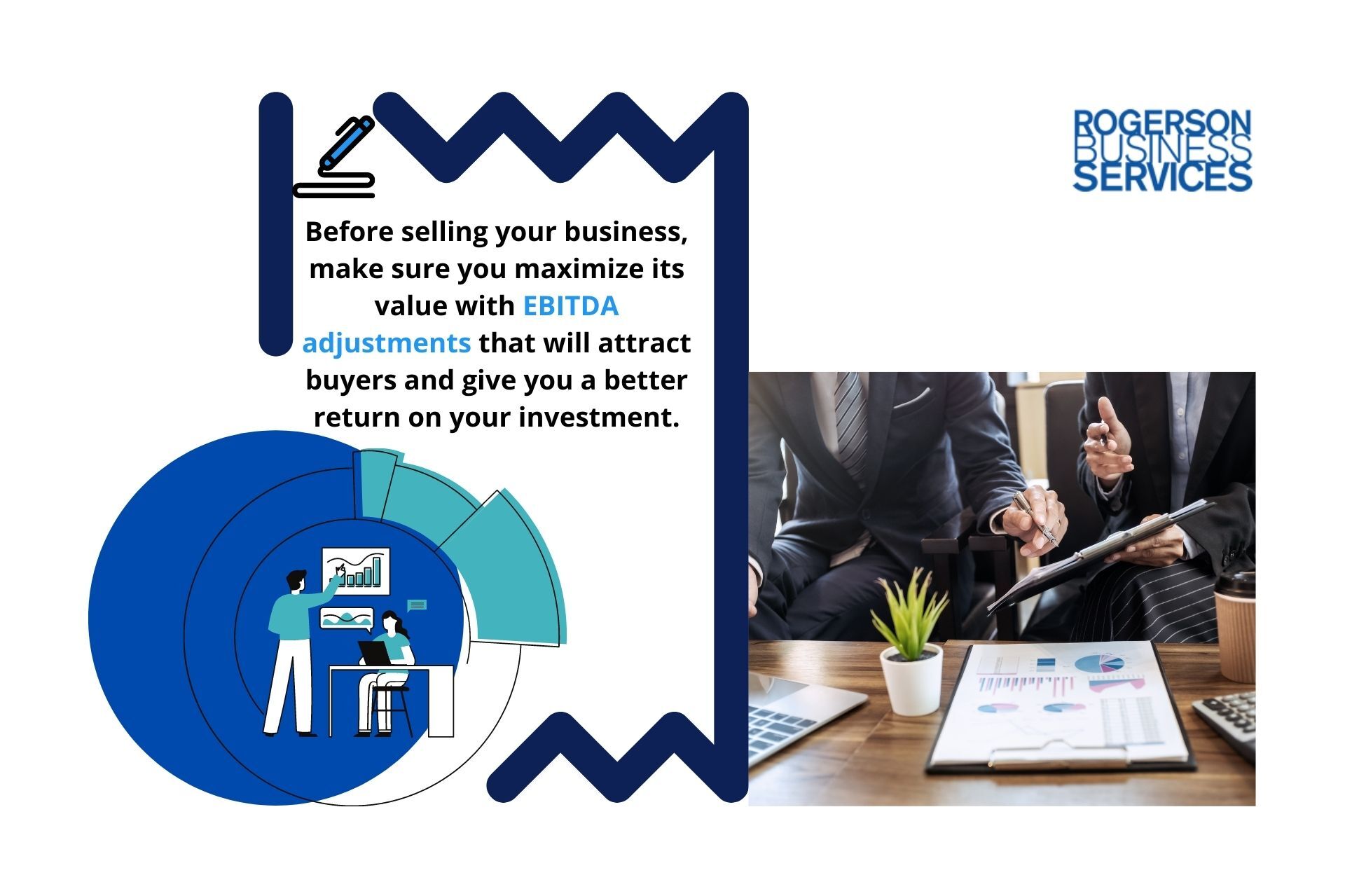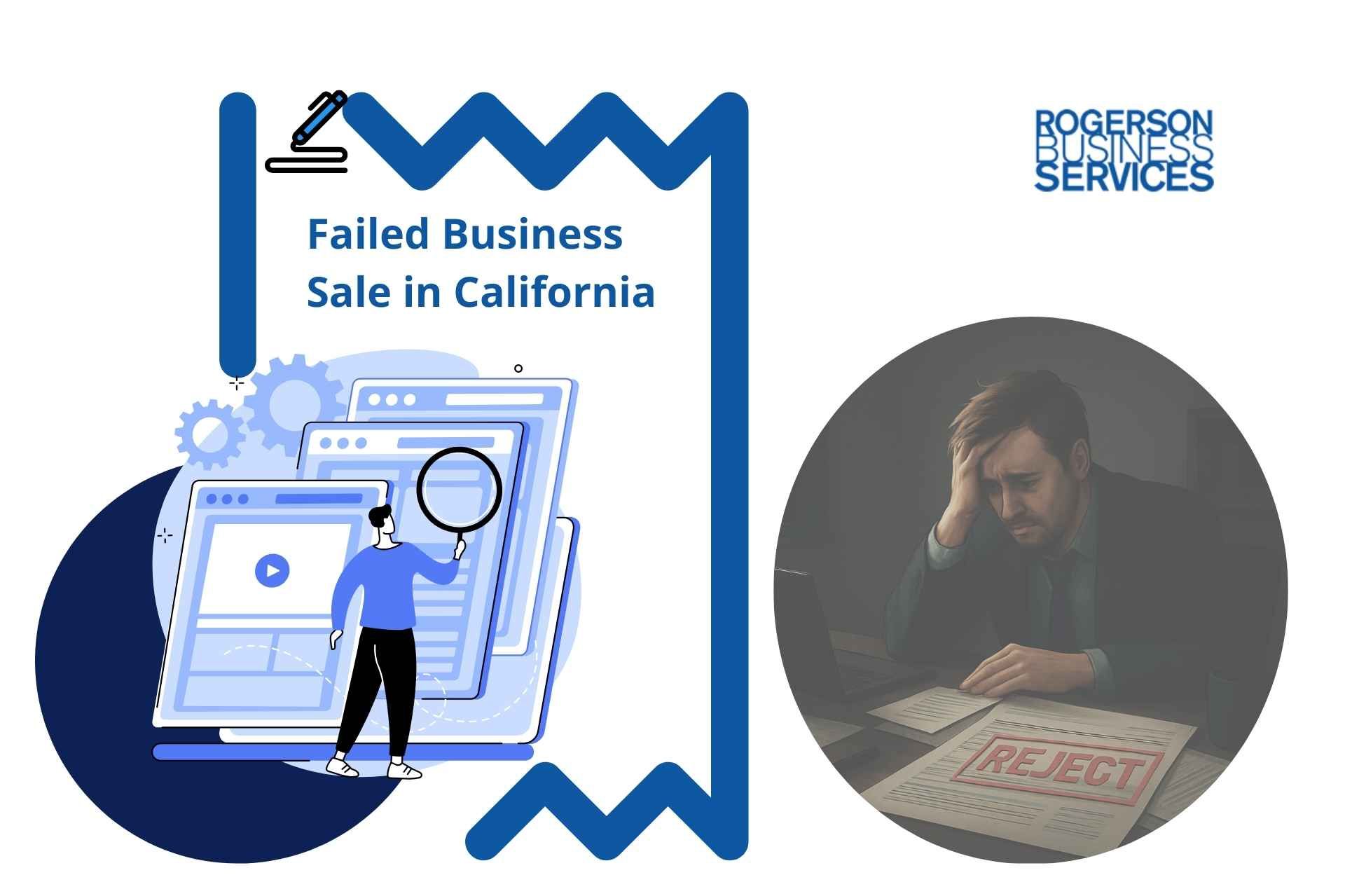EBITDA Adjustments to Do Before Selling a Business in California
EBITDA Adjustments
EBITDA is an acronym for earnings before interest, taxes and depreciation. It represents the net income of a company without taking certain expenses into account such as non-operating items or ones that don't contribute directly to their bottom line figure like amortization costs.

Before selling your lower middle market business in California, make sure you maximize its value with EBITDA adjustments that will attract buyers and give you a better return on your investment.
Adjusted EBITDA Definition
EBITDA is an acronym that stands for earnings before interest, taxes, depreciation, and amortization. It represents a company’s net income before factoring in the listed expenses such as calculating EBITA multiples in a logistics business in California. Take a look at the below example of how to calculate adjusted EBITDA:
| The ABC Company | (in millions) |
|---|---|
| Net Income | $80 |
| + Interest | $83 |
| + Taxes | $4 |
| + Depreciation and Amortization | $155 |
| EBITDA | $322 |
An adjusted EBITDA takes an EBITDA and adjusts it to account for factors such as non-recurring or irregular expenses. We call this normalizing the EBITDA. Doing this with the same information as our first example, we get the following:
| The ABC Company | (in millions) |
|---|---|
| Net Income | $80 |
| + Interest | $83 |
| + Taxes | $4 |
| + Depreciation and Amortization | $155 |
| + Adjusted | $3 |
| Adjusted EBITDA | $325 |
An adjusted EBITDA helps entrepreneurs compare similar companies in the same industry.
10 Smart EBITDA Adjustments
Let’s look at some common EBITDA adjustments.
1) Owner’s Salary and Bonuses:
Your salary may differ from the regular salary of your managers. It is also common for an owner to declare one or more bonuses to reduce income taxes for the year. These expenses should be added back and would more often than not result in an increased adjusted EBITDA. This is so common in construction businesses, manufacturing, wholesale distribution, and some industrial and professional businesses in California to name a few among many other business sectors and niches.
Picture a private lower middle market-owned company that pays C-level managers as family members more than third-party owners. A buyer wouldn’t need to continue to pay them as generously, so you could add the estimated difference back.
2) Property Rental Costs:
If your business rents property owned by a separate legal entity and doesn’t pay market-level rent, you should adjust your EBITDA.
This might be done when a potential buyer determines that a non-assumable lease is under market price, and they will adjust their EBITDA assessment.
3) Non-Arm's-Length Revenue:
The category of non-arm's-length revenue refers to expenses that a company has with third parties that differ from the market price.
For instance, if a supplier who a company shareholder owns sells you supplies at over the market price, then you should adjust the EBITDA to reflect the market value.
4) Start-up Costs:
If you invested in a start-up and are interested in selling it, you should know that the start-up costs are considered a one-time cost.
Because these expenses are not required to run the business moving forward, you can add back the start-up costs to the EBITDA.
5) One-Time Professional Fees:
If you ever hired someone for a specific, non-recurring job, then you can adjust your EBITDA.
For example, if you hired an SEO, search engine optimization, company for a one-time online marketing campaign, you could add back that cost.
6) Insurance Claims, Lawsuits, and Other Disputes:
Any one-time disputes, claims, or lawsuits can be subtracted or added back to the EBITDA depending on the scenario.
If you had to go to court and reach a legal settlement as part of a situation involving an accidental slip and fall, this would be an example of a non-recurring expense that you could add back.
7) Redundant Assets:
Any asset that is not required to run the business is considered redundant, and you can adjust your EBITDA to reflect its expense.
Picture a scenario where you award the employee of the month using a company-owned car. A buyer doesn’t need the car to run the business. You can add any expenses the company paid for the vehicle to the EBITDA.
8) Inventories are important when performing EBITDA adjustments:
If you carry an inventory and have an allowance for its expense, consider adjusting your EBITDA. Estimate what your inventory will be at the time of the business sale and adjust for that amount.
If you have a company with an inventory allowance of $5,000 and you’re carrying an excess with a value of $1,000, then that means you can add that excess back.
9) Maintenance and Repairs:
You can add one-time repair costs, such as for a wall repaired because of water damage, back to the EBITDA. If you have categorized any past capital expenses as repairs or maintenance, go back and reassess them.
You may have done so to help lower taxes, but applicable expenses should be separated and added to the EBITDA.
10) Other Income and Expenses:
You most likely use this category on your financial statements to encompass many different expenses that are not easily assigned to other categories. Typical examples are one-time employee bonuses or charitable donations made by the business.
Review all the expenses you have in this category for anything that is non-recurring. Such expenses most likely can be added back to the EBITDA.
Preparing a Business for Sale: How To Attract Strategic Buyers
Remember, your goal is to raise your adjusted EBITDA to attract buyers. One of the most common types of buyer is the strategic buyer.
What Is a Strategic Buyer?
A strategic buyer is a company or individual already present in the industry. They may be a competitor, supplier, or a client.
A strategic buyer wants to integrate another company into their own and is willing to pay top dollar because of the intrinsic value of the deal.
What Does a Buyer Want?
A strategic buyer is looking for a stable company with growing revenue. They envision a future of long-term success for their new acquisition.
To help sell your business, establish strong practices that allow a business to run smoothly and reassure buyers of your company’s stability.
Work to create a robust and interdependent workforce that a buyer can trust to function after the business changes hands.
Also, look at your business from the buyer’s point of view. Price is important, but so are any terms and conditions a buyer has. Try to be flexible and accommodating to buyers. Doing so will reflect positively on the price you can get for your business.
Final take on EBITDA adjustments
If you’re concerned with getting the most out of the sale of your lower middle market business in California, consider hiring an M&A advisor with business valuation experience to help you make these EBITDA adjustments for maximizing the business value of your lower middle market business. They will help you get the best return on your investment.
Are you a retiring business owner looking to exit your lower middle market business in California? Here are five tips to get you started:
1. Don't wait until the last minute to start planning your exit. The process of selling a lower middle market business can take a long time, so it's important to start early.
2. Have a clear idea of what you want to get out of the sale. Know your goals and what you're willing to negotiate.
3. Choose the right type of buyer. Not all buyers are created equal, so do your research and find the right one for your business.
4. Be prepared for a lot of due diligence. M&A buy-side due diligence is when buyers will want to know everything about your business, so be ready to provide documentation and answer questions.
5. Be flexible with the terms and conditions of the deal. It's important to be open to negotiation to get the best possible deal for your business.
Rogerson Business Services, also known as, California's lower middle market business broker is a sell-side M&A advisory firm that has closed hundreds of lower middle-market deals in California. We are dedicated to helping our clients maximize value and achieve their desired outcomes.
We have a deep understanding of the Californian market and an extensive network of buyers, which allows us to get the best possible price for our clients. We also provide comprehensive support throughout the entire process, from initial valuation to post-closing integration.
Our hands-on approach and commitment to our client's success set us apart from other firms in the industry. If you consider selling your lower middle market business, we would be honored to help you navigate the process and realize your goals.
If you have decided to value and then sell your lower middle market business or still not ready, get started here, or call toll-free 1-844-414-9600and leave a voice message with your question and get it answered within 24 hours. The deal team is spearheaded by Andrew Rogerson, Certified M&A Advisor, he will personally review and understand your pain point/s and prioritize your inquiry with Rogerson Business Services,
RBS Advisors.
This is part of business valuation methods to answer what's my company worth series ->
Hey there! Can we send you a gift?
We just wanted to say hi and thanks for stopping by our little corner of the web. :) we'd love to offer you a cup of coffee/tea, but, alas, this is the Internet.
However, we think you'll love our email newsletter about building value and properly position your company before transition/exit your business ownership.
As a special welcome gift for subscribing, you'll also get our helping and educational guides, tips, tutorials, etc.. for free.
It's filled with the best practices for retiring serial business owners like Dan Gilbert, Larry Ellison, Warren Buffett, and many more.
Just sign up for our emails below.


